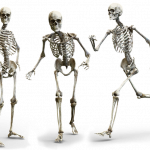Are you one of those people who religiously hits the treadmill, but avoids the weights section like the plague? If so, you’re missing out on a crucial component of fitness and personal health: strength training.
While cardio is important for cardiovascular health and weight loss, strength training offers a host of benefits that go beyond just burning calories. Strength training helps to build muscle mass, which not only gives your body a toned appearance but also boosts metabolism and improves overall physical performance.
Additionally, lifting weights can improve bone density, reducing the risk of osteoporosis later in life. In this article, we’ll dive into why strength training should be an essential part of your fitness routine and how it can help you achieve your personal health goals.
Benefits Of Strength Training For Muscle Mass
 Building muscle mass through strength training is one of the most effective ways to improve personal health. Not only does it make us look better, but it also brings plenty of benefits that go beyond aesthetics.
Building muscle mass through strength training is one of the most effective ways to improve personal health. Not only does it make us look better, but it also brings plenty of benefits that go beyond aesthetics.
For instance, having more muscles means that our bodies can burn fat faster and easier. One crucial aspect of building muscle mass is progressive overload. This refers to gradually increasing the weight or resistance used during exercises over time. By doing so, we stimulate muscle growth and prevent plateaus in progress.
It’s important to choose the right exercises as well – compound movements like squats and deadlifts work multiple muscle groups at once, making them great for overall strength gains. That being said, gaining muscle isn’t just about lifting heavy weights all day long.
Adequate rest and recovery are equally important parts of a successful regimen. When done correctly, strength training can lead to improved bone density, reduced risk of injury, and increased metabolic rate – all essential components for maintaining good health in the long run.
Boosting Metabolism And Physical Performance
As mentioned in the previous section, strength training is crucial for building and maintaining muscle mass. But it’s not just about aesthetics – strength training also has significant benefits when it comes to metabolism and physical performance.
Resistance vs. Cardio: While cardio can certainly help with weight loss and improving cardiovascular health, resistance training may be even more effective at boosting metabolism. This is because building muscle requires energy, and the more muscle you have, the more calories your body burns at rest.
Muscle Building vs. Fat Burning: Another benefit of strength training is that it can help with both muscle building and fat burning simultaneously. When you lift weights or perform other forms of resistance training, you create tiny tears in your muscles which then repair themselves stronger than before. This process not only builds muscle but also increases overall calorie burn as your body works to repair those microtears.
Five Items to Evoke Emotion:
- Feel confident in your own skin
- Boost your self-esteem
- Improve your physical abilities
- Prevent injuries and improve posture
- Live a longer, healthier life
Incorporating strength training into your fitness routine can have a profound impact on all aspects of personal health. By prioritizing resistance over cardio and focusing on maximizing both muscle building and fat burning, individuals can see incredible results in their metabolic rate, physical performance, and overall well-being. So why wait? Start lifting today!
Improving Bone Density
According to the National Osteoporosis Foundation, approximately 54 million Americans over the age of 50 have low bone mass or osteoporosis. This means that their bones are fragile and more susceptible to fractures.
Resistance exercises for osteoporosis can help improve bone density by creating tension on the bones, which stimulates the growth of new bone tissue. Strength training is especially important for seniors because as we age, our bones become less dense and weaker. Without proper intervention, this can lead to a higher risk of falls and fractures.
By incorporating resistance exercises into their fitness routine, older adults can maintain or even increase their bone density, reducing the likelihood of injury. In addition to improving bone health, strength training has numerous other benefits for personal health such as increasing muscle mass, boosting metabolism, improving posture and balance, and reducing the risk of chronic diseases such as diabetes and heart disease.
So if you’re looking to take your fitness routine beyond cardio, consider adding some resistance exercises to your regimen – not only will it benefit your overall health but it could also prevent future injuries.
Personal Health Goals And Strength Training
Setting personal health goals is an essential step towards achieving a healthy lifestyle.
Strength training can be the missing piece to your fitness puzzle, especially if you’re only focusing on cardio workouts. Incorporating strength training into your routine will help you achieve those goals and motivate you to push further.
Challenges are inevitable when it comes to any new workout regimen, but with proper progression, they become less daunting over time.
The key to making progress in strength training is by gradually increasing weight or reps while maintaining good form. This way, you’ll avoid injury and see results much faster than jumping into heavy weights without knowing how to handle them properly.
Motivation plays a crucial role in sticking to your personal health goals and keeping up with strength training routines.
Having a clear vision of what you want to achieve and tracking your progress can help keep you motivated throughout your journey.
Remember that everyone’s body is different, so don’t compare yourself to others around you. Focus on your own improvements, celebrate small victories along the way, and stay committed to living a healthier life through consistent strength training.
Incorporating Strength Training Into Your Fitness Routine
If you’re looking to take your fitness routine to the next level, incorporating strength training is a must. Not only does it help build muscle and increase metabolism, but it also plays an important role in injury prevention.
When done correctly with proper form techniques, strength training can help strengthen ligaments and tendons, reducing the risk of strains or tears. Before jumping straight into lifting heavy weights, however, it’s essential to start slowly and focus on mastering proper technique.
This not only helps prevent injuries but also ensures that you are targeting the right muscles for maximum effectiveness. Don’t be afraid to seek out professional guidance from a personal trainer or coach if needed.
Another way to incorporate strength training into your routine is by using bodyweight exercises. These types of exercises require no equipment and can be performed anywhere at any time. Push-ups, squats, lunges, planks – these moves may seem simple but when done correctly with proper form techniques they can be incredibly effective in building strength and toning muscles.
Can Strength Training Help With Weight Loss?
Strength training is a game-changer when it comes to weight loss. In fact, it’s like the Robin Hood of fitness- stealing fat from all corners and giving muscle the power to take over.
While cardio may be useful for burning calories in the moment, resistance workouts build up lean muscle mass that keeps your metabolism humming long after you’ve left the gym.
And let’s not forget about the euphoria of feeling strong and capable as you lift heavier weights each week.
Incorporating strength training into your routine will help transform your body composition by reducing fat and increasing muscle- trust me, it’s worth every drop of sweat!
Is Strength Training Only Beneficial For Younger People?
Strength training isn’t only for the young and fit. In fact, it’s never too late to start incorporating resistance exercises into your workout routine.
Long term benefits of strength training include improved bone density, reduced risk of chronic diseases such as heart disease and diabetes, increased metabolism, and better overall physical function.
As our population continues to age, maintaining muscle mass and strength becomes even more important for functional independence and quality of life.
So don’t let age be an excuse – make strength training a priority at any stage in life!
How Often Should I Incorporate Strength Training Into My Fitness Routine?
To create an effective strength training program at home, it’s important to determine how often you should incorporate it into your fitness routine.
For seniors, the benefits of strength training are numerous, including improved bone density and reduced risk of falls.
Aim for two to three sessions per week, allowing for rest days in between to allow muscles time to recover.
When creating a program, focus on compound exercises that work multiple muscle groups at once and gradually increase weight over time.
By incorporating strength training into your routine regularly, you’ll improve overall health and reduce the risk of injury as you age.
Can Strength Training Prevent Injuries?
Strength training is not just about building muscle and improving physical appearance. It can also play a crucial role in injury prevention and maintaining overall health.
By strengthening the muscles, tendons, and ligaments, individuals are less likely to suffer from common injuries such as sprains or strains.
Additionally, strength training helps maintain muscle mass which naturally declines with age. This is especially important for older adults as it reduces the risk of falls and fractures.
Incorporating strength training into your fitness routine at least twice a week can significantly improve your chances of injury prevention and maintaining optimal muscle function throughout your lifetime.
Is It Necessary To Use Weights When Strength Training, Or Are Bodyweight Exercises Sufficient?
When it comes to strength training, the age-old debate of barbell vs. bodyweight exercises is a topic that continues to divide fitness enthusiasts around the world.
While weights can help you build maximal strength and increase your overall endurance, bodyweight exercises are perfect for those looking to work out anywhere without any equipment.
But which one is better? Pros and cons exist with both methods, but ultimately, it depends on your personal goals and preferences.
Whether you’re hitting the gym or working out at home, incorporating some form of resistance training into your routine will undoubtedly improve your physical health in the long run.
Strength training should be an essential component of your fitness routine. Not only does it help with weight loss by increasing muscle mass and boosting metabolism, but it also plays a vital role in preventing injuries as you age.
Contrary to popular belief, strength training is not just for the younger generation; in fact, it’s more critical than ever for older adults. When incorporating strength training into your workout regimen, aim for at least two sessions per week and focus on using weights or resistance bands.
While bodyweight exercises can certainly provide benefits, adding external resistance allows you to continually challenge yourself and see improvements over time. As the saying goes: ‘No pain, no gain.’ By pushing yourself out of your comfort zone during strength training sessions, you’ll reap the rewards both physically and mentally.
So why limit yourself to cardio when there’s so much more potential beyond? Start prioritizing strength training today!









